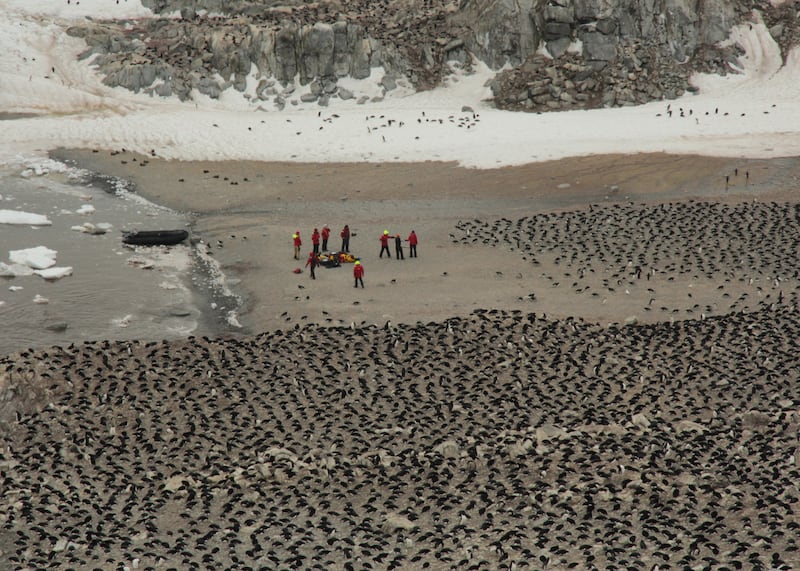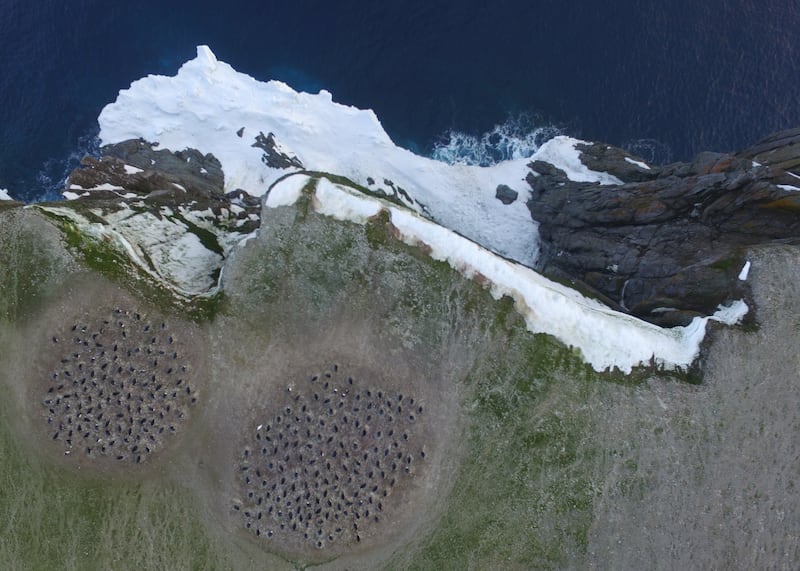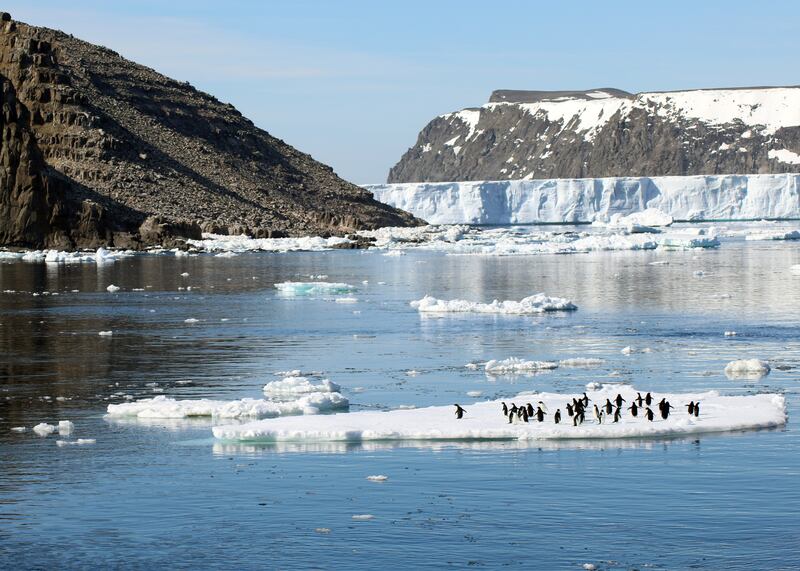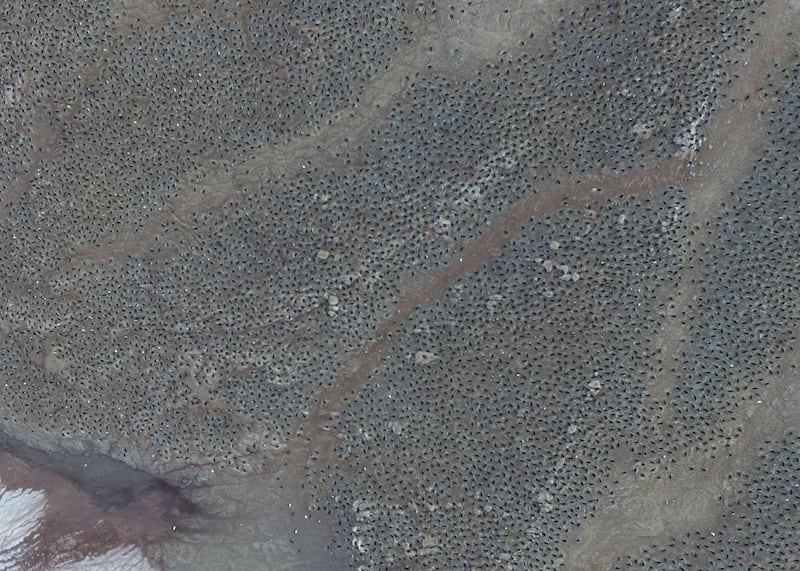Scientists have stumbled across a “supercolony” of penguins on an island in the Antarctic Peninsula relatively untouched by human activity.
Using a combinations of drones, satellite imagery and visits to the remote archipelago called the Danger Islands, the team of international researchers were able to count the number of Adelie penguins residing there.
The results reveal there are around 751,527 pairs of the penguin species – the largest population on the Antarctic Peninsula – but more importantly, they also appear not to have suffered the population declines experienced by neighbouring colonies.

Evidence of the birds’ presence were first noticed when large patches of their excrement showed up in pictures taken by Nasa from space.
Dr Tom Hart, a researcher at Oxford’s Department of Zoology, said: “This was an incredible experience, finding and counting so many penguins.
“Scientifically, while this is a huge number of ‘new’ penguins, they are only new to science.

“Satellite imagery going back to 1959 shows they have been here all along.
“It puts the East Antarctic Peninsula in stark contrast to the Adelie and chinstrap penguin declines that we are seeing on the West Antarctic Peninsula.
“It’s not clear what the driver of those declines is yet; the candidates are climate change, fishing and direct human disturbance, but it does show the size of the problem.”

According to the researchers, their findings suggest that penguins fare better when their environments are undisturbed and are calling for a marine protected (MPA) area in the Weddell Sea.
A decision will be made on whether to create the reserve later this year.
Dr Hart added: “The size of these colonies makes them regionally important and makes the case for expanding the proposed Weddell Sea MPA to include the Danger Islands; they are a hotspot and worthy of protection.

“More than that, I think it highlights the need for better protection of the West, where we are seeing declines.”
The findings are published in the journal Scientific Reports.








